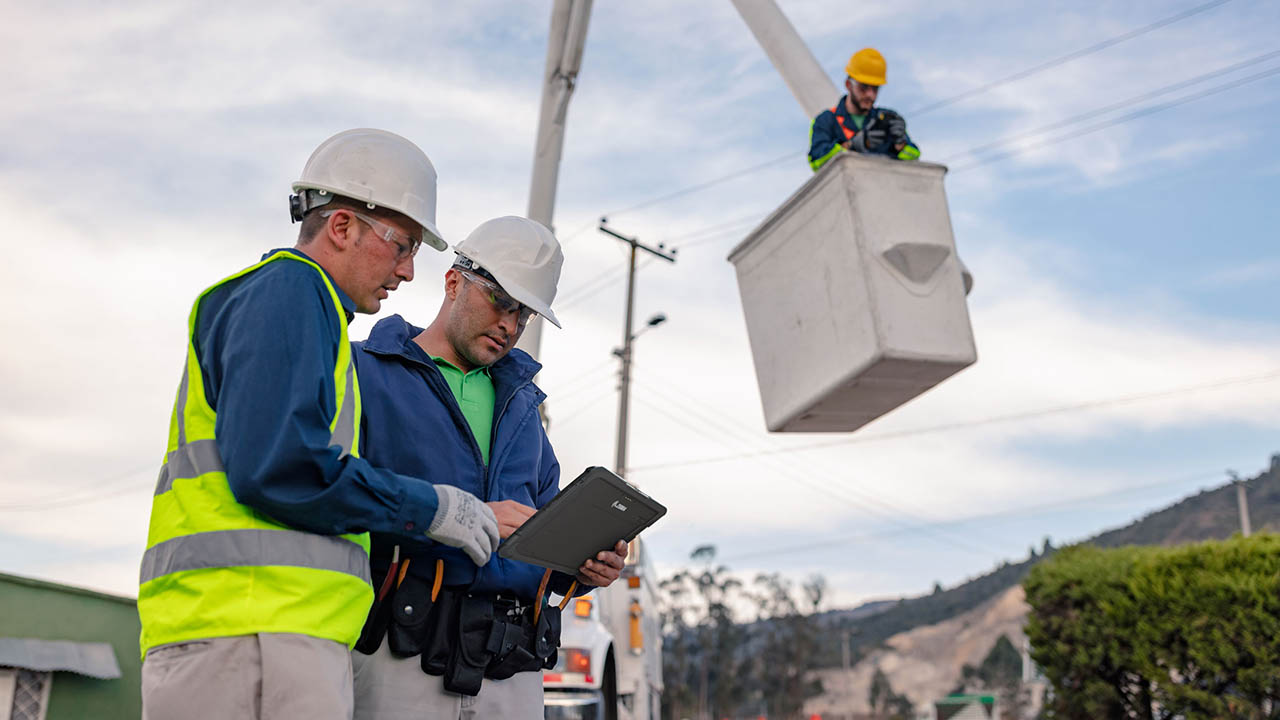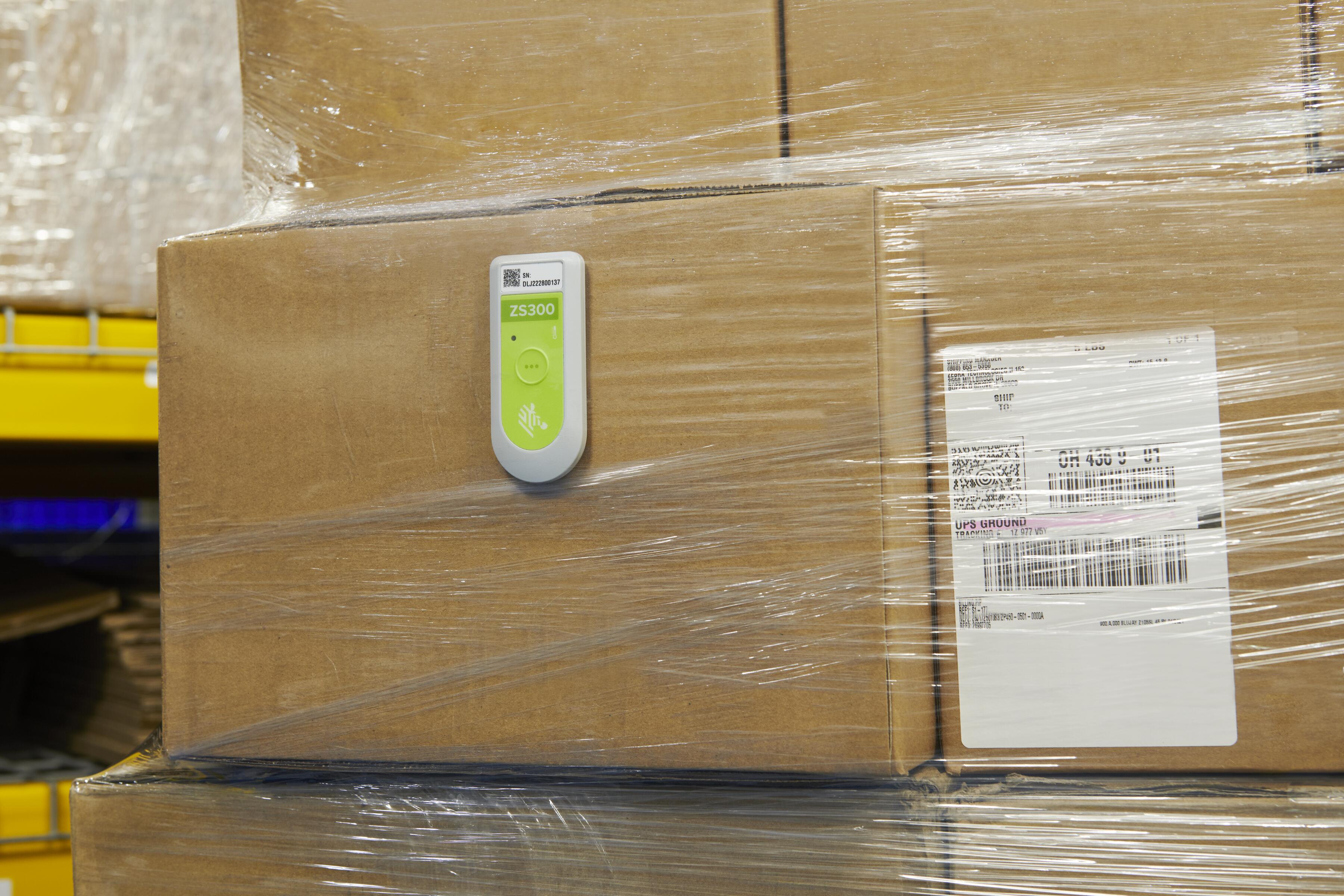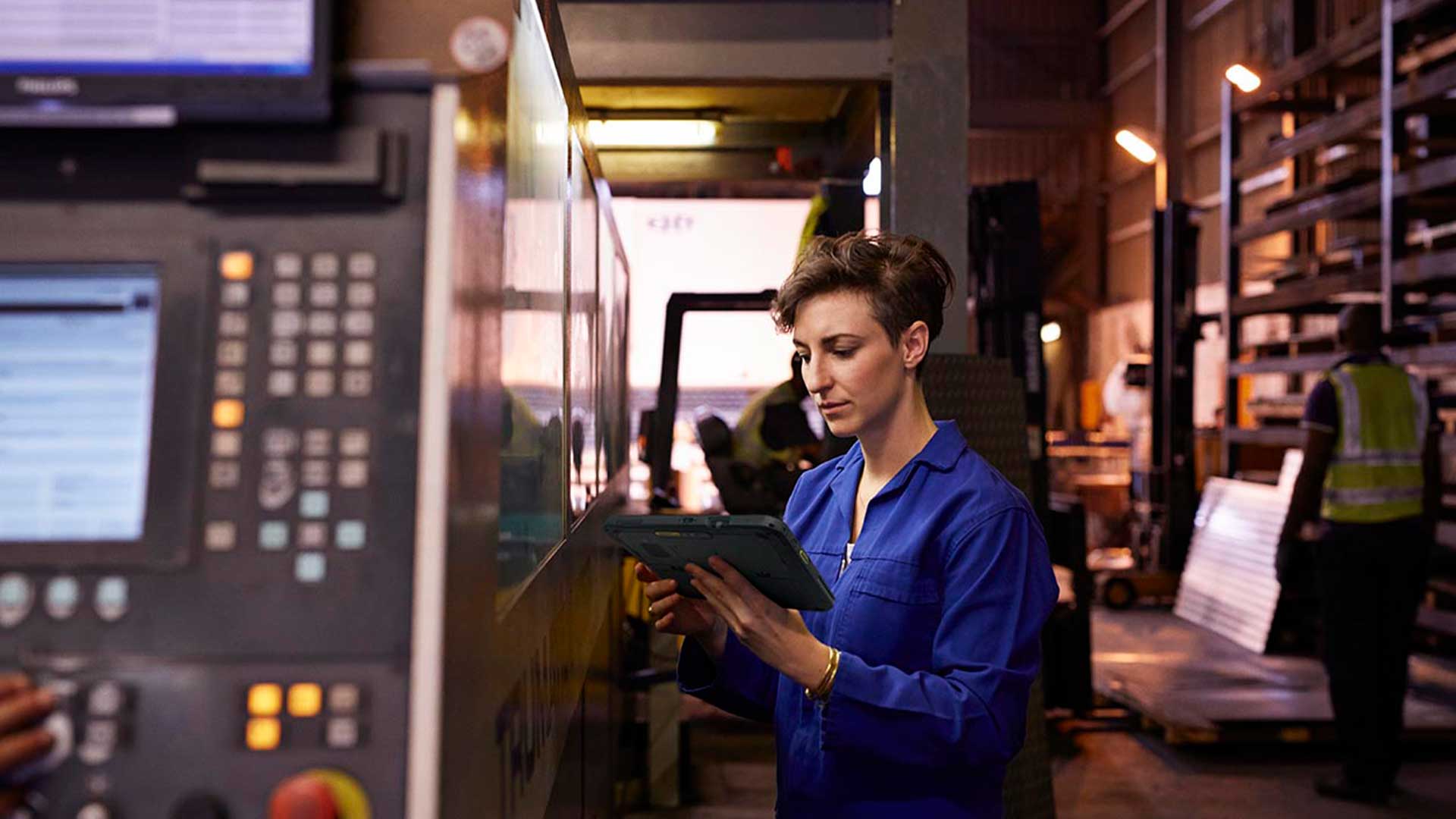Transform retail operations with Zebra’s retail technology solutions, featuring hardware and software for improving inventory management and empowering teams.
Streamline operations with Zebra’s healthcare technology solutions, featuring hardware and software to improve staff collaboration and optimize workflows.
Enhance processes with Zebra’s manufacturing technology solutions, featuring hardware and software for automation, data analysis, and factory connectivity.
Zebra’s transportation and logistics technology solutions feature hardware and software for enhancing route planning, visibility, and automating processes.
Learn how Zebra's public sector technology solutions empower state and local governments to improve efficiency with asset tracking and data capture devices.
Zebra's hospitality technology solutions equip your hotel and restaurant staff to deliver superior customer and guest service through inventory tracking and more.
Zebra's market-leading solutions and products improve customer satisfaction with a lower cost per interaction by keeping service representatives connected with colleagues, customers, management and the tools they use to satisfy customers across the supply chain.
Empower your field workers with purpose-driven mobile technology solutions to help them capture and share critical data in any environment.
Zebra's range of Banking technology solutions enables banks to minimize costs and to increase revenue throughout their branch network. Learn more.
Zebra's range of mobile computers equip your workforce with the devices they need from handhelds and tablets to wearables and vehicle-mounted computers.
Zebra's desktop, mobile, industrial, and portable printers for barcode labels, receipts, RFID tags and cards give you smarter ways to track and manage assets.
Zebra's 1D and 2D corded and cordless barcode scanners anticipate any scanning challenge in a variety of environments, whether retail, healthcare, T&L or manufacturing.
Zebra's extensive range of RAIN RFID readers, antennas, and printers give you consistent and accurate tracking.
Choose Zebra's reliable barcode, RFID and card supplies carefully selected to ensure high performance, print quality, durability and readability.
Zebra's rugged tablets and 2-in-1 laptops are thin and lightweight, yet rugged to work wherever you do on familiar and easy-to-use Windows or Android OS.
With Zebra's family of fixed industrial scanners and machine vision technologies, you can tailor your solutions to your environment and applications.
Zebra’s line of kiosks can meet any self-service or digital signage need, from checking prices and stock on an in-aisle store kiosk to fully-featured kiosks that can be deployed on the wall, counter, desktop or floor in a retail store, hotel, airport check-in gate, physician’s office, local government office and more.
Adapt to market shifts, enhance worker productivity and secure long-term growth with AMRs. Deploy, redeploy and optimize autonomous mobile robots with ease.
Discover Zebra’s range of accessories from chargers, communication cables to cases to help you customize your mobile device for optimal efficiency.
Zebra's environmental sensors monitor temperature-sensitive products, offering data insights on environmental conditions across industry applications.
Zebra's location technologies provide real-time tracking for your organization to better manage and optimize your critical assets and create more efficient workflows.
Enhance frontline operations with Zebra’s AI software solutions, which optimize workflows, streamline processes, and simplify tasks for improved business outcomes.
Empower your frontline with Zebra Companion AI, offering instant, tailored insights and support to streamline operations and enhance productivity.
The everything you need to rapidly and cost effectively develop high-performance AI vision applications on Zebra mobile computers.
Zebra Frontline AI Blueprints deliver adaptable, real-world AI frameworks that automate manual tasks and drive efficiency in high-pressure frontline operations.
Zebra Workcloud, enterprise software solutions boost efficiency, cut costs, improve inventory management, simplify communication and optimize resources.
Keep labor costs low, your talent happy and your organization compliant. Create an agile operation that can navigate unexpected schedule changes and customer demand to drive sales, satisfy customers and improve your bottom line.
Drive successful enterprise collaboration with prioritized task notifications and improved communication capabilities for easier team collaboration.
Get full visibility of your inventory and automatically pinpoint leaks across all channels.
Reduce uncertainty when you anticipate market volatility. Predict, plan and stay agile to align inventory with shifting demand.
Drive down costs while driving up employee, security, and network performance with software designed to enhance Zebra's wireless infrastructure and mobile solutions.
Explore Zebra’s printer software to integrate, manage and monitor printers easily, maximizing IT resources and minimizing down time.
Make the most of every stage of your scanning journey from deployment to optimization. Zebra's barcode scanner software lets you keep devices current and adapt them to your business needs for a stronger ROI across the full lifecycle.
RFID development, demonstration and production software and utilities help you build and manage your RFID deployments more efficiently.
RFID development, demonstration and production software and utilities help you build and manage your RFID deployments more efficiently.
Zebra DNA is the industry’s broadest suite of enterprise software that delivers an ideal experience for all during the entire lifetime of every Zebra device.
Advance your digital transformation and execute your strategic plans with the help of the right location and tracking technology.
Boost warehouse and manufacturing operations with Symmetry, an AMR software for fleet management of Autonomous Mobile Robots and streamlined automation workflows.
The Zebra Aurora suite of machine vision software enables users to solve their track-and-trace, vision inspection and industrial automation needs.
Zebra Aurora Focus brings a new level of simplicity to controlling enterprise-wide manufacturing and logistics automation solutions. With this powerful interface, it’s easy to set up, deploy and run Zebra’s Fixed Industrial Scanners and Machine Vision Smart Cameras, eliminating the need for different tools and reducing training and deployment time.
Aurora Imaging Library™, formerly Matrox Imaging Library, machine-vision software development kit (SDK) has a deep collection of tools for image capture, processing, analysis, annotation, display, and archiving. Code-level customization starts here.
Aurora Design Assistant™, formerly Matrox Design Assistant, integrated development environment (IDE) is a flowchart-based platform for building machine vision applications, with templates to speed up development and bring solutions online quicker.
Designed for experienced programmers proficient in vision applications, Aurora Vision Library provides the same sophisticated functionality as our Aurora Vision Studio software but presented in programming language.
Aurora Vision Studio, an image processing software for machine & computer vision engineers, allows quick creation, integration & monitoring of powerful OEM vision applications.
Adding innovative tech is critical to your success, but it can be complex and disruptive. Professional Services help you accelerate adoption, and maximize productivity without affecting your workflows, business processes and finances.
Zebra's Managed Service delivers worry-free device management to ensure ultimate uptime for your Zebra Mobile Computers and Printers via dedicated experts.
Find ways you can contact Zebra Technologies’ Support, including Email and Chat, ask a technical question or initiate a Repair Request.
Zebra's Circular Economy Program helps you manage today’s challenges and plan for tomorrow with smart solutions that are good for your budget and the environment.
The Zebra Knowledge Center provides learning expertise that can be tailored to meet the specific needs of your environment.
Zebra has a wide variety of courses to train you and your staff, ranging from scheduled sessions to remote offerings as well as custom tailored to your specific needs.
Build your reputation with Zebra's certification offerings. Zebra offers a variety of options that can help you progress your career path forward.
Build your reputation with Zebra's certification offerings. Zebra offers a variety of options that can help you progress your career path forward.

What Are You Doing to Ensure Your New Utility Workers Can Keep Up with Retirees?
Are you training them more? Using technology to transfer knowledge? Or just hoping that expertise will be restored with time?
For the past two years, we’ve seen the workforce age gap close in the utility industry – especially in the energy sector. Positions left open by retirees are being filled by younger professionals eager to start building their careers. While that’s a positive trend in terms of building a strong future workforce, we must still acknowledge and address the skills gap that exists today.
The reason why the wave of retirements a few years back caused such a panic is because it takes time to become skilled as an engineer, plant manager, lineman, field service technician, or renewables specialist. You can’t just refer to a manual to be successful. I mean, manuals help you understand the basics. But success comes with experience and, more specifically, exposure. Only once you’ve had the opportunity to work on different types of equipment, work in different conditions, and solve different types of problems do you truly become skilled at your job.
Since we can’t accelerate time, we must find some other way to close that experience gap between retiring and developing workers.
How do we – and you – get your new workers to the same level as your retiring workers?
You really can't, at least not for a while. Using technology to speed up training, automate repetitive tasks, and provide access to information and expert guidance are some ways to speed up the learning curve for newer workers.
Now, usually when I say this, someone asks…
“Are you talking about using AI as a knowledge transfer tool? If so, how do you teach AI what it needs to know to assist new workers? How do you fully capture people’s experiences and document expertise so that it can be referenced later?”
The key here is to engage your more seasoned workers, in the time they have with your company, to design and develop standard digital tools and processes. This serves as the basis for having processes and historical data that can be leveraged to train AI models that are optimized for the specific job-related needs. So, think of AI as an intermediary that takes the knowledge provided by your most experienced people before they retire and ensures it’s passed along to the right people at the right time. It’s sort of a “train the trainer” situation, where your experienced workers are providing the information needed to train AI that, in turn, trains the next generation of your workforce. Now, I’m sure you’re wondering…
“If we’re going to rely on technology to mentor and manage the utility workforce, does that mean they need a certain digital acumen to be good candidates for this type of work?”
Well, the future is digital, and workers entering the workforce must be comfortable with using technology. Now, that doesn’t mean they have to know how to use every aspect of every technology system in full the day they start. However, they need to be able to learn it quickly if they’re going to be successful in their roles. That said, the level of digital acumen needed may differ between front-line and back-office roles, as the people responsible for getting the technology to work the right way will need to be well-versed in a variety of systems.
“Do you mean that we will need AI engineers or other tech experts on staff to set up and manage the technology tools?”
Correct. However, utilities must compete for the same level of talent/enterprise as technology companies, which is going to be another challenge. You must start thinking now about how you can make it attractive for skilled technology professionals to come to work for you, as they’re going to be simultaneously recruited by tech companies that offer high-paying roles and rapid career advancement opportunities.
Now, you may feel that it’s premature to worry about talent recruitment for high-tech roles when you’re still using pen and paper to manage your operations. In fact, when my colleagues and I start talking about the potential use cases for AI in utility operations, some people ask:
“What if I don’t trust AI yet? Or I need time to figure out what type of AI systems I want to use in support of different functions. What else can I do to ensure the workers I’m sending out into the field today can get the job done, even if they only have a few years – or a few weeks – of experience?”
In this case, we back up the conversation a bit and get back to basics. I tell them that, “At a minimum, you must digitize workflows.”
Using technology to push the right information to workers when they’re installing, monitoring, managing, maintaining, or restoring systems is now table stakes. You must also provide a means for them to quickly access information when needed. Of course, this is where AI can assist with knowledge transfer from experienced workers to new workers as I mentioned. But even if you have a very experienced staff, knowledge sharing and collaboration are key to managing many utility operations such as demand management, outage restoration, and even infrastructure/system modernization and scaling. These types of functions and decisions require many inputs, and communication is much easier if everyone can share information both digitally and verbally while working from disparate locations.
If they have the right mobile technology in hand – the right hardware and software tools – then anyone on your workforce will be able to confidently assist where needed. The technology can be used to tell them where to go and what to do when there.
“As you said, though, it’s difficult to account for every situation ahead of time. Sometimes it takes curiosity, creativity, and critical thinking to anticipate and mitigate – or resolve – issues. How does technology help with that, if it even can?”
There are some great remote assistant and workforce communication tools available today for the utility workforce that won’t be a burden on IT to setup or manage and are easy for front-line workers to learn and use, even if they aren’t super tech-savvy. They enable front-line workers to access specialists who may be elsewhere. The front-line worker can show the specialist what they’re seeing so the specialist can guide them through the best next steps. Of course, AI could assist both parties as well by sharing the steps taken by others in similar situations in the past. But even if you increase AI use, you need to keep people well-connected and sharing information, and just digitizing your workflows will facilitate that connection and information flow in a way that can be quite game-changing.
“Do you believe that giving workers more technology tools will stop them from leaving my organization or this career path altogether? My non-retirement attrition rate is very high right now, and I know other utilities are dealing with the same thing. So, I don’t want to spend a lot of money on workforce technology if it’s not going to create stickiness.”
Yes. There is a known correlation between employee recruitment and retention and technology use dating back several years, and it’s because worker productivity and efficiency are improved with technology.
If properly designed, configured, and connected, technology will indisputably help people do their jobs faster and with less frustration. They won’t have to struggle to track down or share information, communicate with colleagues or customers, get visibility into utility system performance, or know what’s impacting performance. They’ll have that information at their fingertips through a combination of mobile technology, RFID and barcode systems, AI, sensors, and other automated data capture, analysis, and distribution technology. This helps them become valued contributors faster and feel pride in the work they’re doing; they will be able to deliver positive results faster and more frequently.
Plus, one of the main benefits of this type of technology is to help those who are still around pick up the slack without burning out. Without the right technology tools in place, how do we expect utility workers to take on a larger or more complex workload as retirements or other forms of turnover occur? How can they sustain even the status quo if they are still trying to learn the job or upskill to fill experience gaps? Without technology, it’s going to be (or at least feel) impossible, and that’s very likely to contribute to high attrition. Technology creates stickiness because it makes it easier for people to do their jobs, assuming the technology itself isn’t complicated to use or manage.
Final Thoughts
You must close the knowledge gap and make your workforce think and act as if they have years more experience than they probably do. That means you must tap into technology in a greater capacity than you had before. That doesn’t mean you necessarily need to add a ton of new systems at once. However, you may need to make a few additions, upgrades, or refinements to your hardware, software, and systems to ensure workers are fully supported.
You should also do whatever it takes to understand AI and quell fears about the technology. AI has been used by utilities, governments, and other field service organizations for years, as well as organizations in other industries. While generative AI applications are just now starting to mature, several other types of AI have proven valuable for everything from predictive maintenance and demand planning to process control, anomaly and fault detection, energy management, and report generation. AI has also proven to be helpful to people as both a customer service agent and worker assistant.
So, lean into technology. Ask how your existing technology can be further configured or connected to systems to guide your workers or make their jobs easier, then find out what other tech tools your workers – or the next generation of workers – want you to provide that you don’t have in place yet. Focus your investments there. Even simplifying the meter reading process or making it faster for field teams to report the status of their work orders and coordinate with warehouse teams for supply replenishment can go a long way to improving morale and efficiency (and, therefore, retention).
If you need someone who can help you conduct a technology impact assessment in terms of workforce empowerment, we’re happy to help you or connect you with a local partner who can assist. We can offer an objective recommendation on how to strengthen your workforce with the help of technology so that they are happier and more capable of keeping customers, investors, and regulators happier via greater service reliability, compliance, etc.
Reach out if you'd like to chat about what other utilities are doing to simplify front-line work or perhaps unique ways you could be using tech (that maybe others aren’t yet).
Zebra Developer Blog
Zebra Developer BlogZebra Developer Blog
Are you a Zebra Developer? Find more technical discussions on our Developer Portal blog.
Zebra Story Hub
Zebra Story HubZebra Story Hub
Looking for more expert insights? Visit the Zebra Story Hub for more interviews, news, and industry trend analysis.
Search the Blog
Search the BlogSearch the Blog
Use the below link to search all of our blog posts.
Most Recent
Legal Terms of Use Privacy Policy Supply Chain Transparency
ZEBRA and the stylized Zebra head are trademarks of Zebra Technologies Corp., registered in many jurisdictions worldwide. All other trademarks are the property of their respective owners. Note: Some content or images on zebra.com may have been generated in whole or in part by AI. ©2025 Zebra Technologies Corp. and/or its affiliates.




